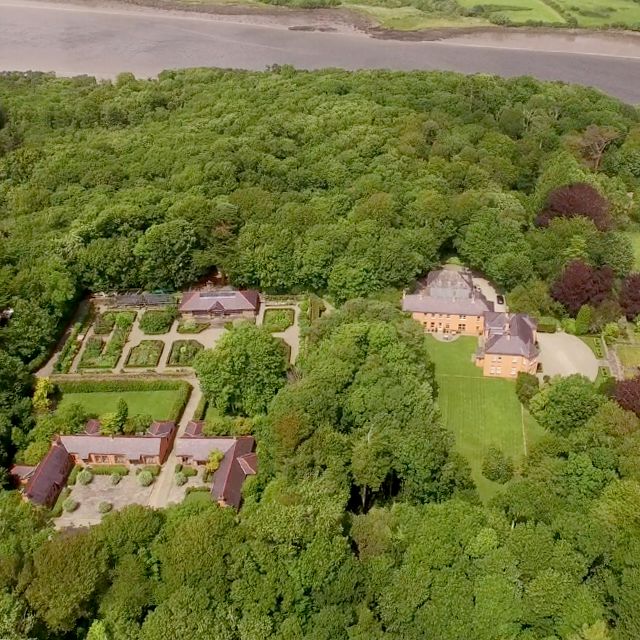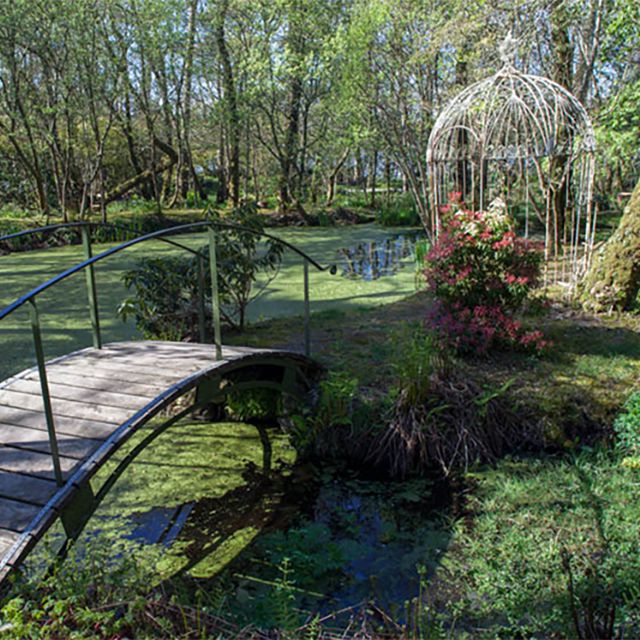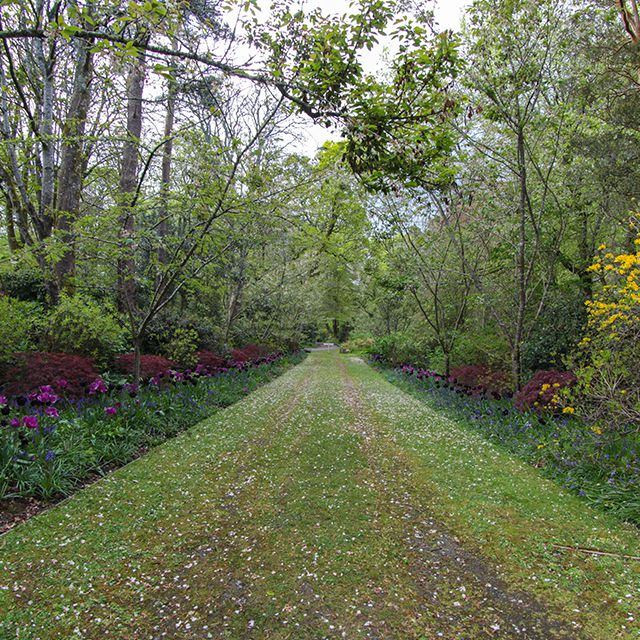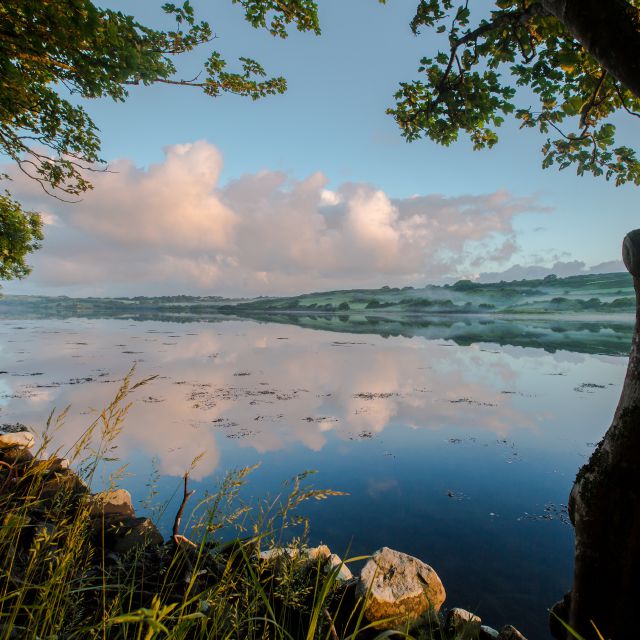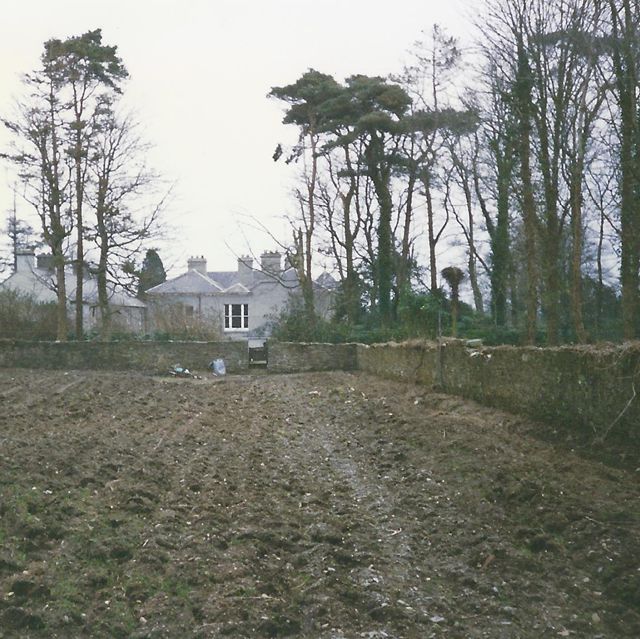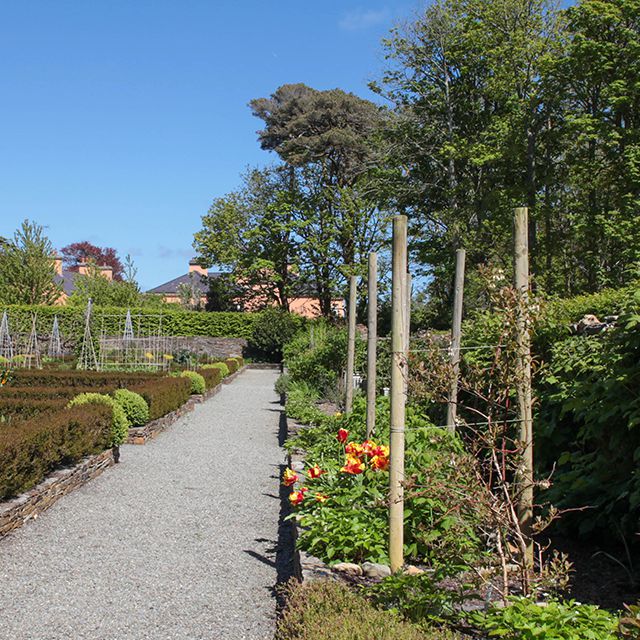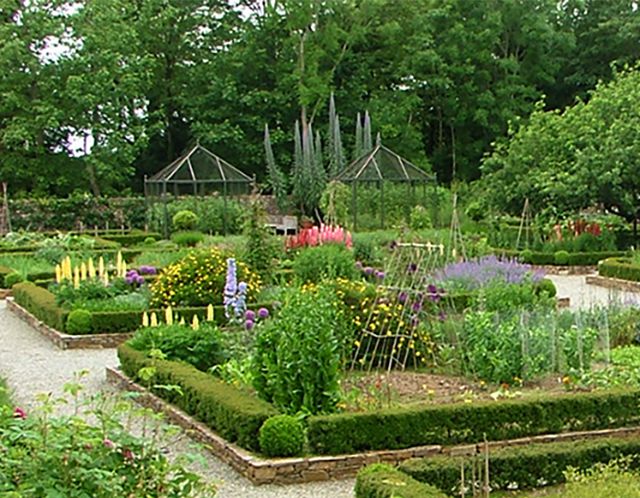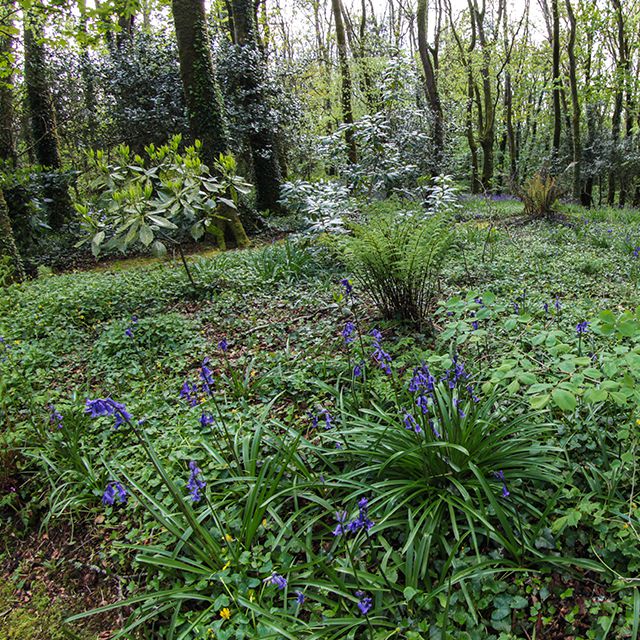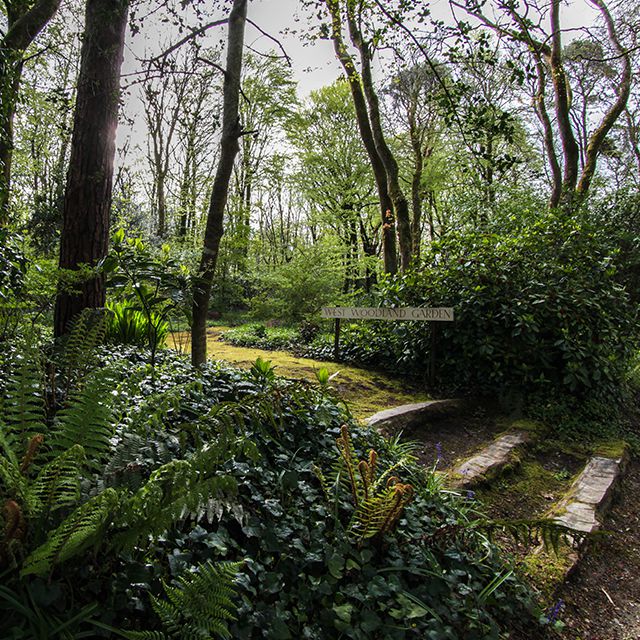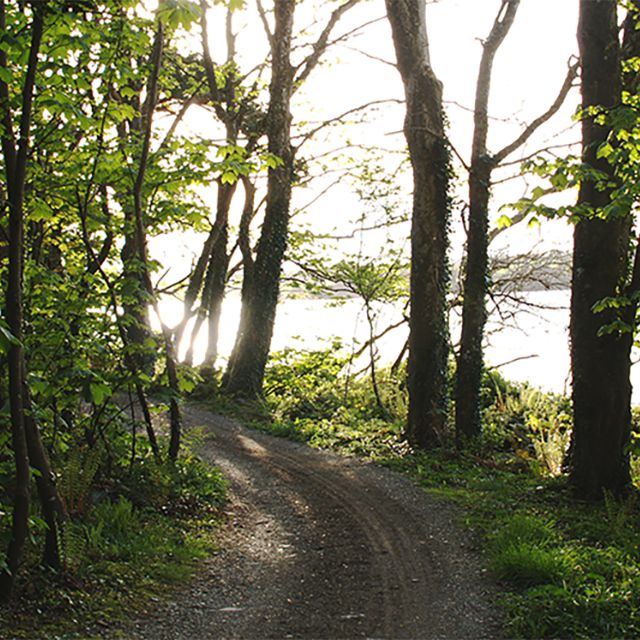Inish Beg Estate comprises 97 acres;
Inish Beg is featured in "100 Best Gardens in Ireland" (Liberties Press May 2011).
The gardens are Open all year round excluding Christmas day. Opening times between 11am and 5pm last
entrance). (Except occationally when weddings have booked the whole estate) There is a small charge to enjoy the woodlands, pirate trail, fairy trail
& gardens.
The Estate & gardens will be closed on these up coming dates due to weddings.
In 1997 there was little remaining under the cloak of Escallonia, Aucuba and Rhododendron ponticum – no rare trees or shrubs, no trace of earlier gardens, no old plans – just a wonderfully peaceful atmosphere. In a way this was a great relief, as we were not constrained by what was there before. We have been free to create new garden areas based on our own philosophy and preferences, starting afresh but following some clear guidelines.
Overriding is the need to maintain the feeling of peace and tranquillity in moving from one area to another. One influence has been the way vistas open and close so that all is not revealed at once. We have accentuated this, so that in some areas gaps have been filled while in others views have been opened up. Nature is allowed much freedom here: the planting of berried shrubs such as Cotoneaster encourages birds, and not all weeds are regarded as intruders. For instance yellow pimpernel and enchanter's nightshade love the woodland, marsh marigolds thrive in the wet areas and herb robert makes itself at home throughout.
The main part of Inish Beg House was completed in 1899, so there is an element of looking back over our shoulders to Arts-and-Crafts style in an effort to make the gardens sit comfortably with the house. Inevitably formality gives way to more naturalistic planting the further away from the house you go. An important objective, as in most gardens these days, has been to keep maintenance to a minimum, which can be difficult when you grow fruit and vegetables, and have a large walled garden to care for. We try to mulch where possible and otherwise plant informally the sort of plants that don't need too much attention. The process of regeneration is ongoing – we are still improving and adding to areas we have already planted as well as planning future projects – a sunken garden with a fountain in front of the house on the Eastern side has been the most recent creation .
You are invited to look at the story so far by following a guided walk through the gardens and woodlands:
As you cross over the bridge onto Inish Beg Island, you enter the woodlands that extend in all directions. They are carpeted with bluebells and primroses in the spring and provide a cool shady retreat in the summer.
You pass the first of the more 'gardened' areas at the Hairpin Bend. Here we have planted Sorbus hupehensis 'November Pink' with viburnumsand Rhododendron 'Palestrina' and R. 'Blue Danube'. Ferns are allowed to grow more or less where they want.
Passing through the front gate you are now on the Entrance Drive winding past exposed rock and through woodland. A touch of formality
is provided on the downhill side with the repetition of Rhododendron arboreum, Sorbus cashmiriana, double-flowered wild cherry and silver hollies. There are also
several acers, rhododendrons and heathers. The view suddenly opens out
across the fields to the river. This part of the drive is lined with
thousands of golden daffodils in March.
To the North of Inish Beg
House a Cherry Avenue planted in 1999 as a spring and
autumn border based on Acer palmatum dissectum 'Garnet',Azalea 'Exquisitum', camellias, blue hydrangeas, Euonymus alatus and
many more. There are hostas, regale lilies, white foxgloves (we try to
keep the purple ones under control) autumn cyclamen, Colchicum and many spring bulbs. Wild primroses have made this area their home
and have almost become a weed!
At the lower end of this avenue to
the left is a very Swampy Corner which is being developed
into an exotic, almost primeval area with upturned roots, crooked trees
and large leaved plants such as Fatsia japonica, hostas, Primula florindae, and tree ferns.
On the other side of the track is a recently planted Dampish Area. Here are willows, dogwoods, stag's horn sumac, swamp cypress, hostas and yellow ligularias.
The West Woodland Garden is on your left. When trees blow down, as happened here, the sadness is mitigated by the creation of more space and light and therefore an opportunity to grow more exotic species. Here there are now witch hazels, hydrangeas, Enkianthus, azaleas and magnolias amongst many others.
Enter the Orchard that was totally overgrown in 1997. The old apple trees have been rescued and now bear profusely. New fruit trees have been planted to add variety such as almond, pear, quince, medlar, cherry and plum. Paths are cut through the carpet of wild flowers (bluebells and primroses in the spring) down past the beehives to the Nut Grove and then new shelter planting beyond the macrocarpas next to the estuary.
A narrow path along the stream leads you into the East Woodland Garden where winding paths criss-cross the wooded slope looking across to another wet area – a home for exotic tree ferns, primulas and japanese irises. On the wooded slope is a collection of bamboo as well as Prunus 'Tai Haku', magnolia, fothergilla, maples, rhododendrons and many other unusual woodland plants.
Following the stream up and out onto the track le Boudicca's Bath where weeping willow, Gunnera and Primula pulverulenta form a distinct view. Continuing down the track takes you to the Estuary and slipway in front of the Boathouse, and then along the Heron Ride, passing a bird-hide and the pools known as Hannibal's H2O and Pumpkin's Puddle (planted around with coloured-stemmed willows and dogwoods as well as marsh marigolds) and gradually back to the Walled Garden . This part of the walk might take you half an hour.
The Walled Garden is unusual on account of the relatively low walls. In 1997, it was totally overgrown with no trace of paths or original layout remaining. There was just one old apple tree and faint marks on the south-facing wall of an old glasshouse. It took years of clearing, grazing with pigs and digging to prepare the ground for the garden you see today, together with extensive repairs to the walls themselves. The design is formal but allows for a variety of different interests. The raised beds are hedged with dwarf myrtle Myrtus communis tarentina rather than the usual box. There are, of course, vegetables and fruit, while the fruit cages form important vertical features. Along the main vistas are colourful flowers and low semi-shrubs with wigwams of sweet peas. Yellows, purples and blues at the east end merge with pinks and crimsons towards the west end. The Swimming Pool, new Glasshouse and Frames take advantage of the south-facing wall. The roses are all varieties used medicinally, while culinary herbs stretch along the East wall. At the western end next to the fruit cages is a Knot Garden, and placed around the walls are Arts-and-Crafts style seats. Here you can sit awhile taking in the tranquil mood, the sights and the scents.
Verney Naylor – Garden Designer
All made possible by our wonderful team
The woodlands at Inish Beg Estate extend over 42 acres in two main areas to the South and to the North, separated by 42 acres of pasture. Little active management had taken place when they were surveyed in 1996 as part of the West Cork Woodland Survey conducted by An Taisce West Cork from 1995-1998. They contained a mixture of native, semi-native and exotic trees, which had been added to with coniferous plantings fifty years ago.
When Paul and Georgiana Keane acquired the Estate in September 1997 it was clear the woodlands had become seriously neglected and that their survival required active management. A more detailed tree survey was carried out together with a bird survey to establish the basis for a Woodland Management Plan, but severe storms that December wrought havoc, uprooting a specimen golden macrocarpa, destroying much of the 1954 plantation, and felling many mature scots pine, ash, beech, and sycamore. The Woodland Management Plan had several objectives, principally to maintain the woodlands as a mixture of mainly indigenous deciduous species with some coniferous areas. But it was also necessary to enhance their wildlife, recreational and educational value, and where possible, to produce good-quality, small-scale timber for use on the Estate and for local markets.
The Forest Service approved a Woodland Improvement Scheme to Grant-aid some of the work, and we set about producing Work Plans for each area, gradually implementing them over the next 6 years. The woodlands needed bringing back to a healthy condition that could be relatively self-regulating, but the changes had to give wildlife time to adjust and protect the local flora and fauna. This involved encouraging different aged trees with seedlings, saplings, semi-mature, mature and dead trees present throughout the woodlands, and with them a diversity of habitats. We also wished to increase the variety of native tree and shrub species present and promote restocking through natural regeneration.
Just as the Management Plan was bringing some order from the chaos with a network of access routes for extraction, further storms at Christmas 1999 uprooted over 200 trees creating six months of exhausting removal and repairs. To secure the northwestern woodland margins from future damage by prevailing winds, it was decided to establish a new shelterbelt of sessile and pedunculate oak and scots pine in 2.5 acres of the adjacent meadow. Only after this was completed could we return to the detailed area-by-area renovation work.
Much of the woodland restoration involves removing invasive species such as bracken, brambles, laurel and rhododendron in selected areas where they are overwhelming young trees or shading out interesting flora. Some seedlings are relocated from areas of abundance to newly opened ground, while non-native species which support a high bio-diversity have been introduced in areas nearer the main House and Courtyard. Ivy, honeysuckle and other climbers on tree-trunks are retained as food plants, but removed from tree limbs where they are dangerous.
The access routes became rides extending over 7 kilometres around and through the woodlands, where visitors can now walk and enjoy pony-and-trap driving. These are sign-posted accordingly Plantation Ride, Storm Ride, Ilen Ride and Heron Ride. Seats, hides, picnic areas, shelters, and signs are also being provided at selected locations. Old drains have been reopened, while some wet, rocky and marginal areas have been used to create ponds – notably Hannibal's H2O and Boudicca's Bath (named after the owners' bulldogs).
A second severe storm on 12th of February 2014 brought down 230 trees. Winds of 100km/h roared up the Ilen Estuary and blew over 7 huge Monterey cypresses (Macrocarpa) originally planted around 1895. These have been planked for the needs of the estate over the coming years.
The following tree species were identified during the 1997 woodland survey:
To these we have added the following species over the years:
Anthony Cohu – Architectural, Landscape and Interior Design -Tel: 027 66042
Read more: Birds & Wildlife at Inish Beg
